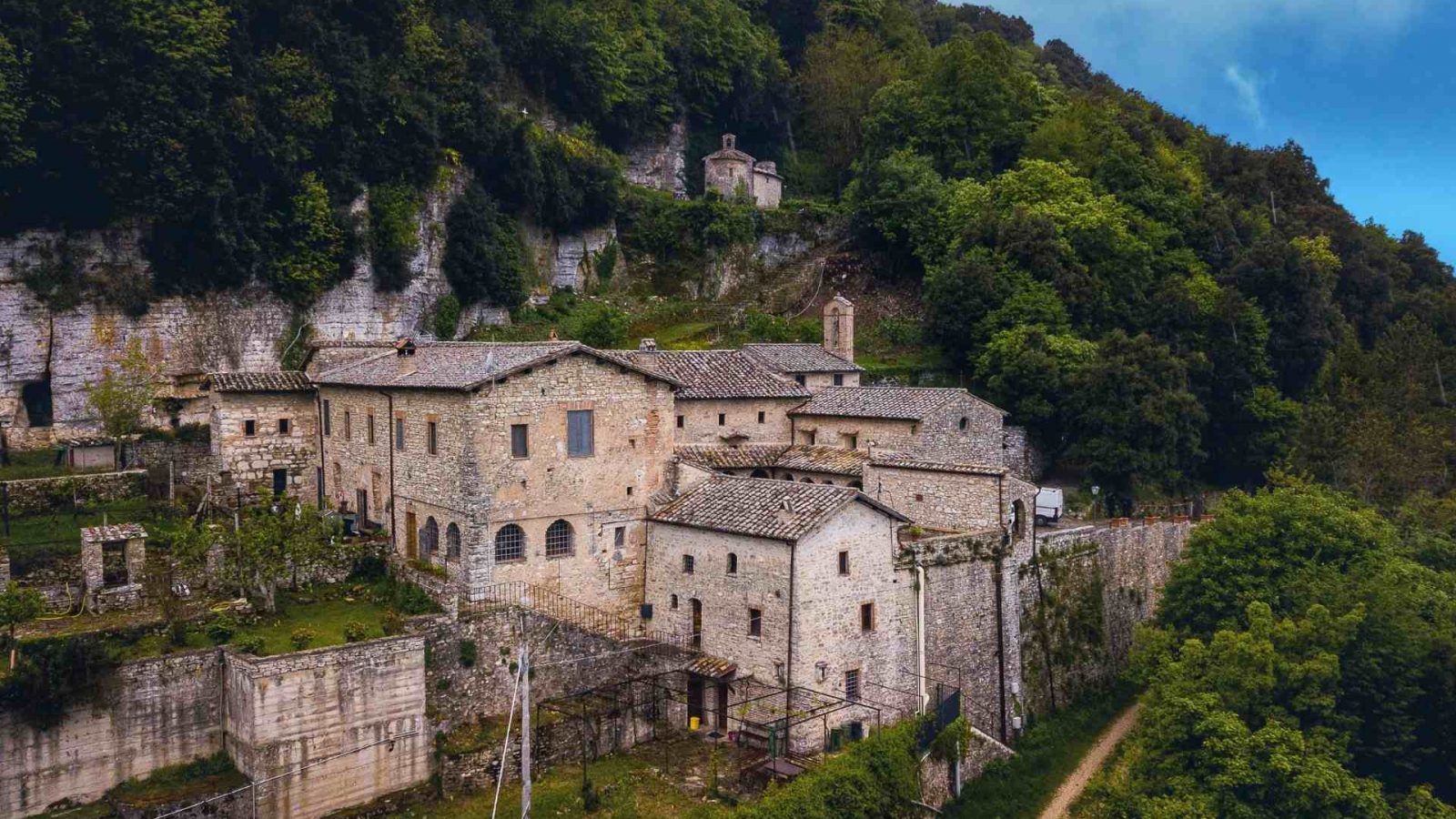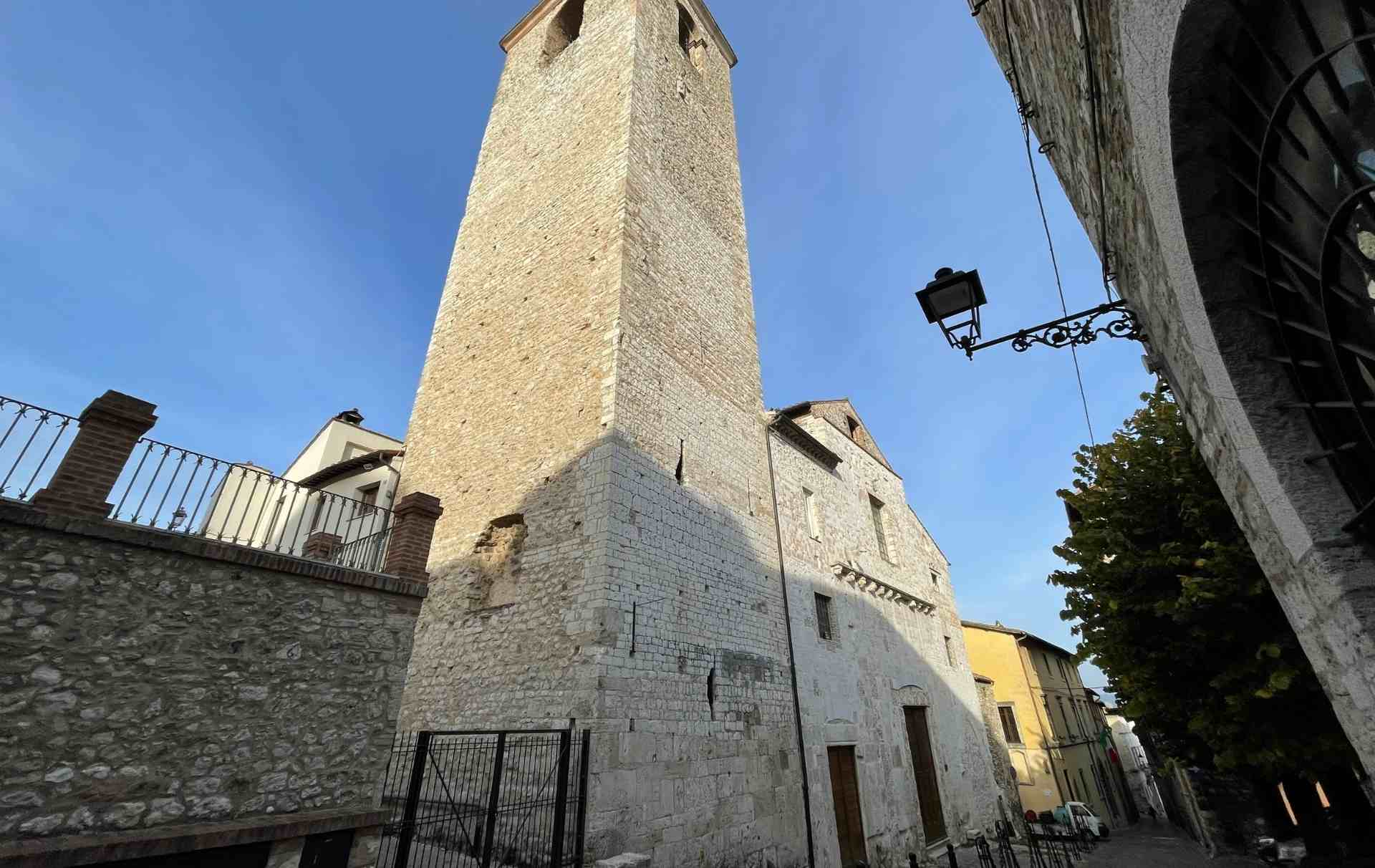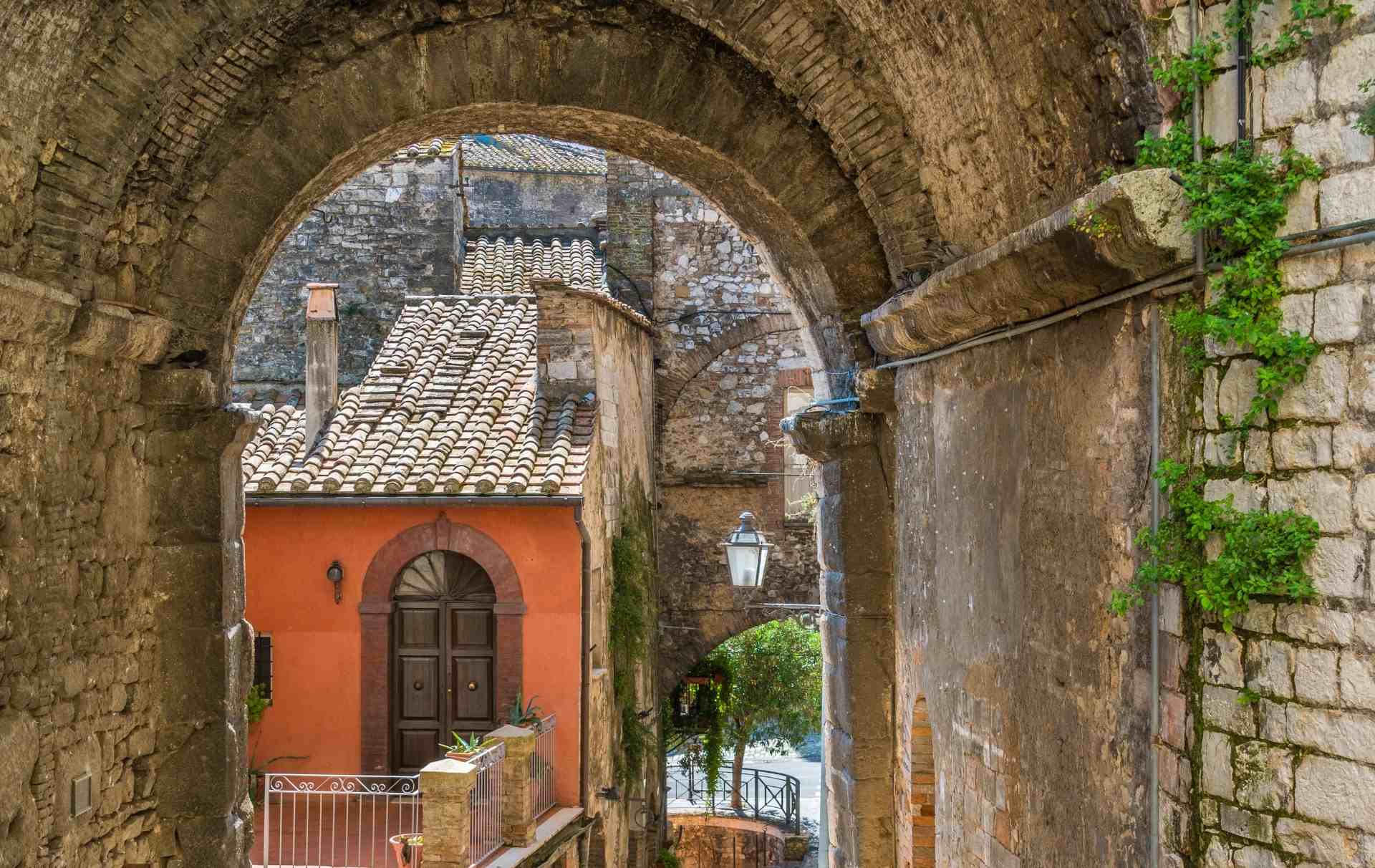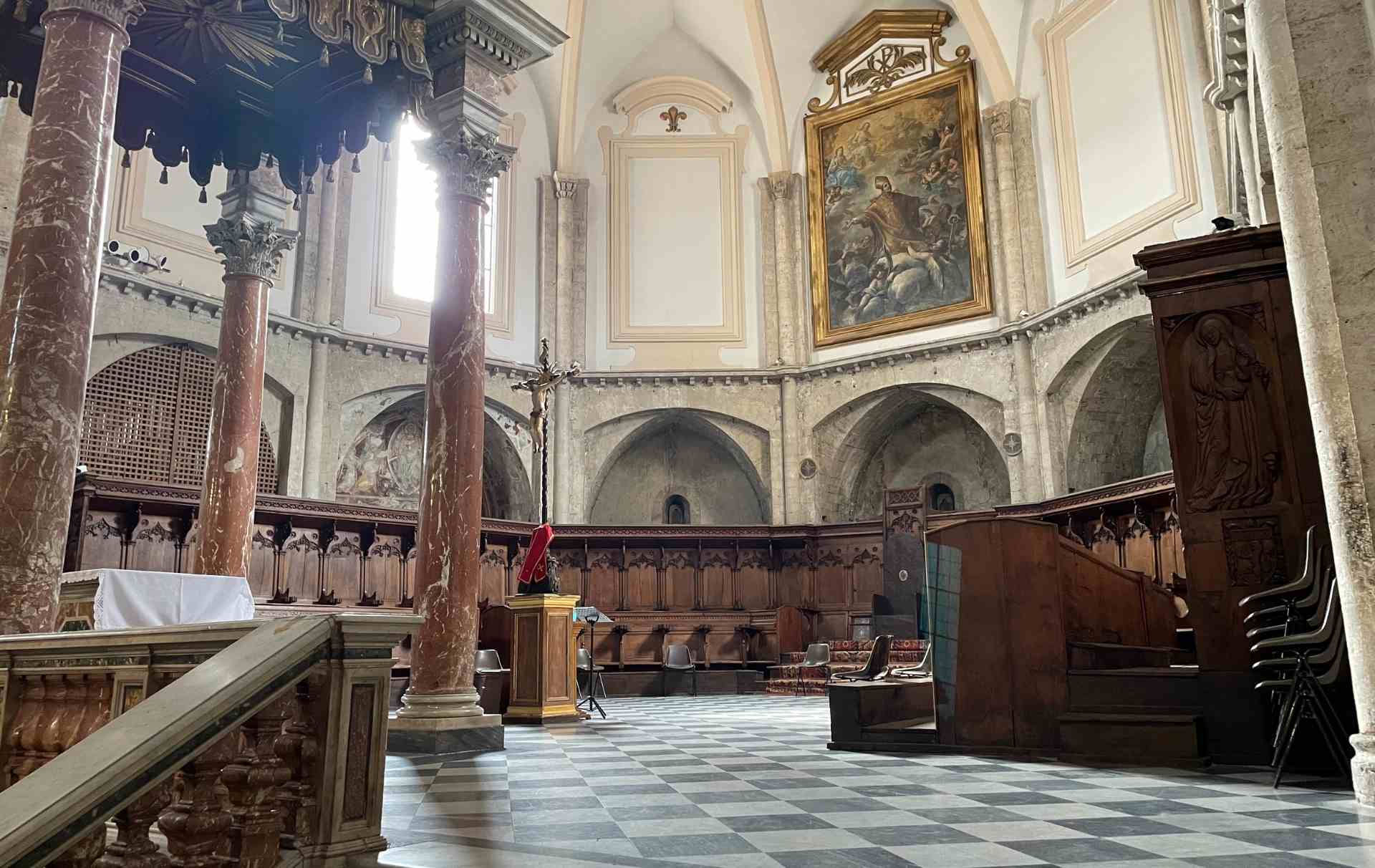14 km far from Narni and places on a hill of 600 meter reachable through a tortuous trail of great landscape interest, the Sacred Cave of San Francesco arises on these places where Francesco used to go to pray and is one of the most important sanctuaries of Italy.
The Sacred Speco of San Francesco, a place rich in spirituality and suggestion.
Coming by foot from Stroncone with some of his brothers, San Francesco arrived in what was known as the Hermitage of Sant’Urbano, built by the Benedictines two centuries before , in 1213.
From that time, he often retired to this place of peace and silence to pray and meditate by himself in a cave ( or “speco”) used by the hermits.
Was there tha, following the tradition, he listened to the music of the lyre played by an angel and, on another occasion, transformed the water from the well – even now visible – into wine, as the Fioretti of Tommaso from Celano tells us.

The franciscan sanctuary of Narni.
In addition of the sacred fissure in the rock, the sanctuary – even now caratheried by a deep sense of spirituality and peace – preserves the primitive structures , as the Oratory of San Silvestro, the places where was the Saint and the Convent which was built after the work of San Bernardino from Siena.
Immersed into the green in a position which dominated the valley between the village of Sant’Urbano and that one of Vasciano, you arrive at the Sacred Speco of Narni going through the “Viale del Perdono” (“Street of Forgiveness”) .
Parked the car in the parking lot placed 150 meter from the entrance you can reach the little church built between the end of 1500 and the beginning of 1600, in one aisle which preserves an interesting wood crucifix from the XVI century and a tabernacle of the next century with spiral colonnades .
Next to the church there is the cloister from the 15th century with a splendid view of the valley.
From the cloister you can enter into the Oratory of San Silvestro , the part more ancient of the complex and principal place of prayer – until the arrival of San Bernardo – of who used to live in the hermitage. The apse area of the oratory has a fresco from the 14th century with the Crucifix and the Madonna, San Giovanni Evangelista, San Francesco and San Silvestro. Inside other frescoes represented Santa Chiara, San Gerolamo and Santa Caterina d’Alessandria.
Behind the apse , the well from which San Francesco took the water for the miracle of the transformation into the wine.
The cloister allows the entrance even to the Refectory of San Bernardino.
In the upper floor there are the cells of the Convent of San Bernardino which hosted, in addition to the Saint, the blessed Giovanni Bonvisi from Lucca and the blessed Pietro from Rieti.
Going up into the woods you can arrive at the Sacred Speco and to the little church dedicated to him which in its simplicity on the inside has two frescoes which tell the miracle of the wine.
In one cell is, even today, preserves the bed where the Saint had rested during his illness and, in front of, the “column of the Angel”.
In the opposite grass is a centenary chestnut tree which, following the tradition, started to flourish when San francesco planted his staff before leaving.
The Speco and the Way of the Franciscan Protomartyrs.
The suggestive trail of the Way of the Franciscan Protomartyrs, in its second stage – from Stroncone to Calvi dell’Umbria – goes through the Sacred Speco in the Narni territory ,land of Sant’Adiuto, franciscan Protomartyr.
Sacred CAve of San Francesco
140, Strada Narni Sant’Urbano, 05035 Narni TR
The Sacred Speco of San Francesco – Hermitage of Sant’Urbano – can be visited every day from 8.30am to 7pm.
It is suggested to park the car into the Parking of the Sacred Speco of San Francesco, 150 meters from the convent, you will receive a statue of the Saint of Assisi.
Discover Narni.
Discover with us the places of interest most closed to the Sacred speco of San Francesco.
Or discover the points of interest of Narni and of its territory:

Auditorium Bortolotti, former Church of San Domenico
That which today is a modern Mario Bartolotti Auditorium, in the past was the first Cathedral of Narni. Entrusted then to the Dominicans, was part

Via dell’Arco Romano
Via dell’Arco Romano, for its views and different restaurants where people enjoy the traditional dishes of Narni and more, is one of the most photographed

The apse: the seven chapels and the chorus
The apse, in the Gothic architecture, is characterized by seven chapels inside of which the architect has wanted to link the uniqueness of the Narnese


